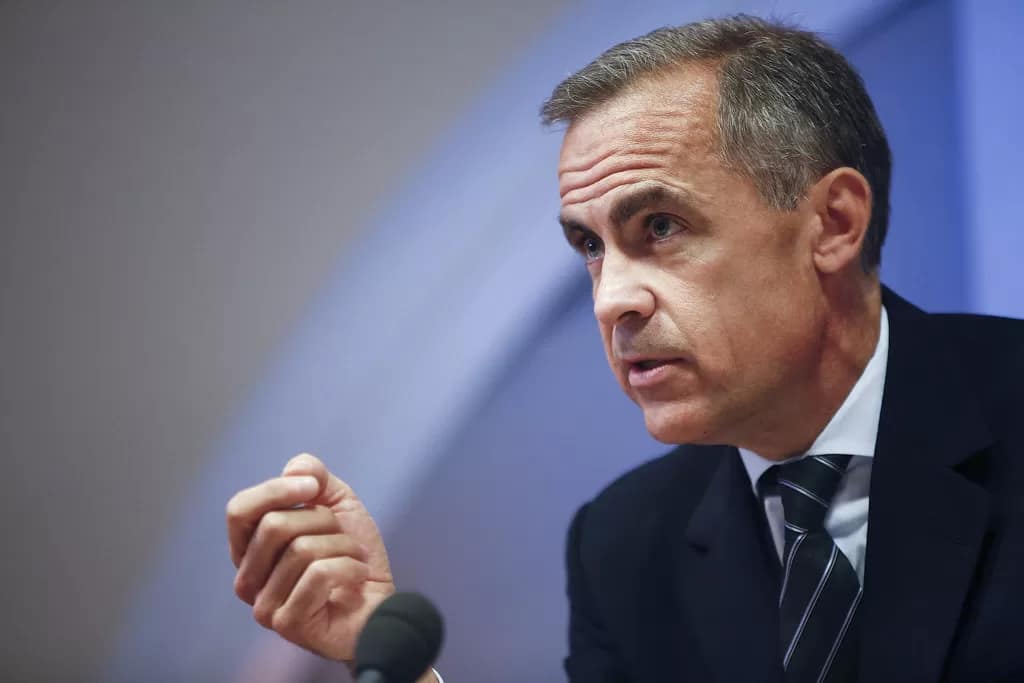Washington, D.C. — The Oval Office meeting between U.S. President Donald Trump and newly elected Canadian Prime Minister Mark Carney was a study in contrasts—diplomatic cordiality masking underlying tensions on trade, defense, and even the very idea of Canadian sovereignty. What began as a routine discussion between two allied leaders quickly veered into unexpected territory, with Trump reviving his controversial suggestion that Canada could one day become part of the United States.
The encounter, which lasted just over 30 minutes in front of the press before moving to private talks, covered a wide range of issues, from tariffs and manufacturing to NATO commitments and the ongoing conflict with Houthi rebels in Yemen. While both leaders sought to project unity, their differences were impossible to ignore—particularly on economic policy and the future of North American trade.
Trade and Tariffs: A Recurring Flashpoint
The most substantive portion of the The Oval Office Meeting discussion revolved around trade, a perennial sore spot in U.S.-Canada relations during Trump’s presidency. The former president wasted no time in reiterating his disdain for the North American Free Trade Agreement (NAFTA), which he called “the worst trade deal in the history of our country, probably in the history of the world.” He credited his renegotiated U.S.-Mexico-Canada Agreement (USMCA) as an improvement but insisted that further adjustments were necessary.
Trump’s Tough Stance on Canadian Exports
Trump defended his administration’s tariffs on Canadian steel, aluminum, and automobiles, framing them as essential to protecting American industry. “We don’t want Canadian steel because we’re making our own steel and having massive steel plants built as we speak,” he said. “We don’t want to subsidize Canada.”
He claimed that the U.S. had long been taken advantage of in trade with Canada, citing a “tremendous deficit” that he suggested ran into the hundreds of billions annually. “It’s hard for the American taxpayer to say, ‘Gee, we love doing that,’” he remarked.
Carney’s Pushback
Prime Minister Carney, for his part, acknowledged the need for ongoing discussions on trade but pushed back against the idea that Canada was a free-rider. “We are the largest client of the United States in the totality of all trade,” he noted. “Fifty percent of a car that comes from Canada is American. It’s not like anywhere else in the world.”
He also hinted at Canada’s own economic leverage, suggesting that abrupt changes to trade terms could hurt U.S. industries just as much as Canadian ones. Still, he struck a conciliatory tone, emphasizing that both nations benefit from cooperation.
The “51st State” Remark: Sovereignty vs. Speculation
Perhaps the most surprising moment came when Trump revisited his past musings about Canada joining the U.S. as the “51st state.” He framed the idea as a financial boon for Canadians, claiming it would mean “tremendously lower taxes, free military, tremendous medical care.”
“Look at that beautiful formation when it’s together,” Trump said, gesturing as if imagining a merged map of North America. “I’m a very artistic person. When I looked at that, I said, ‘That’s the way it was meant to be.’”
Carney’s Firm Rejection
Carney, however, was unequivocal in his response. “As you know from real estate, there are some places that are never for sale,” he said, nodding to Trump’s business background. “We’re sitting in one right now—Buckingham Palace is another. And having met with the owners of Canada over the course of the campaign, I can say Canada is not for sale, won’t be for sale ever.”
The exchange, while lighthearted in tone, underscored a fundamental divide: Trump’s transactional view of international relations versus Canada’s insistence on maintaining its independence.
NATO and Defense: A Rare Area of Agreement
One area where the two leaders found common ground at this Oval Office Meeting was military cooperation. Trump, who has frequently criticized NATO allies for insufficient defense spending, acknowledged Canada’s recent increases in military investment.
“They were low, and now they’re stepping up,” Trump said. “It’s a very important thing.”
Carney affirmed Canada’s commitment to collective security, particularly in the Arctic, where both nations share strategic interests. “Your leadership has revitalized NATO,” he told Trump, adding that his government would continue to strengthen Canada’s defense capabilities.
The Houthi Announcement: Bold Claim, Few Details
In a moment that caught reporters off guard, Trump declared that the Houthi rebels in Yemen had agreed to stop attacking ships in the Red Sea—a claim that, if true, would mark a significant de-escalation in a conflict that has disrupted global shipping.
“They announced they don’t want to fight anymore,” Trump said. “We will honor that, and we will stop the bombings effective immediately.”
When pressed for details, however, he offered no evidence beyond citing a “very good source.” Secretary of State Marco Rubio, standing nearby, confirmed the administration’s confidence in the Houthis’ commitment but provided no further specifics.
Skepticism remains high, given the Houthis’ past behavior and the lack of an official ceasefire agreement. If verified, the development could ease tensions in a critical maritime corridor—but for now, the announcement raises as many questions as answers.

Teasing a “Major Announcement”
At the end of the Oval Office Meeting, True to form, Trump teased an upcoming “very, very big announcement,” hinting that it could be “as big as it gets.” He refused to elaborate, only saying it would come within days and would be “very positive.”
Speculation immediately turned to possible trade breakthroughs, a foreign policy shift, or even a surprise diplomatic move. Given Trump’s penchant for dramatic reveals, the mystery will likely dominate headlines until the official unveiling.
China and Trade: A Hardline Stance
The Oval Office Meeting conversation also touched on U.S.-China relations, with Trump boasting about his aggressive tariffs on Chinese goods. “We lost a trillion dollars to China on trade because of an incompetent president who preceded me,” he said, referring to the Obama and Biden administrations.
He claimed that China was now “suffering greatly” from the lack of trade with the U.S. and expressed openness to future negotiations—but only on his terms. “They want to meet, and we’ll meet at the right time,” he said.
Conclusion: A Productive Oval Office Meeting?
The meeting highlighted both the enduring partnership and the lingering friction between the U.S. and Canada. While Trump’s “51st state” comments may have been more rhetorical than policy-driven, they underscored his unconventional approach to diplomacy—one that prioritizes leverage and deal-making over traditional alliances.
Carney, meanwhile, projected calm resolve, balancing respect for Trump’s transactional style with a clear defense of Canadian sovereignty. His emphasis on mutual economic and security interests suggested a pragmatic path forward, even as Trump’s protectionist policies loom large.
As both leaders move forward, the key question remains: Can this relationship evolve into a true partnership of equals, or will the specter of tariffs and annexation talk continue to define it? For now, the answer lies somewhere between Trump’s “never say never” and Carney’s unyielding “not for sale.”







